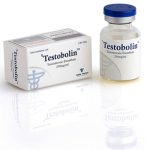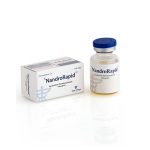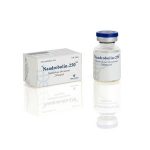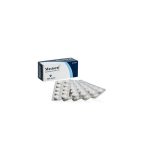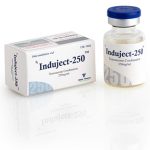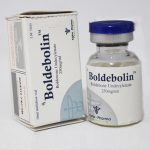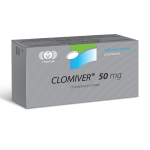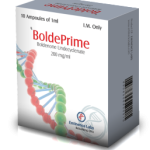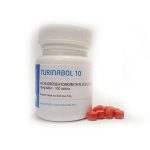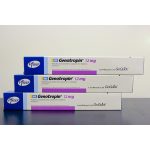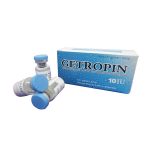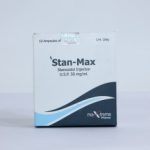Tren enanthate
Endogenous parathyroid hormone, which is a sequence of 84 amino acid residues, is a key regulator of the metabolism of calcium and phosphorus in bone and kidney. Teriparatide is an active fragment of the endogenous human tren enanthate. The physiological effect is to stimulate bone formation by direct effects on osteoblasts. Indirectly increases intestinal calcium absorption, tubular reabsorption and renal phosphate excretion.
Pharmacodynamic properties
The biological action of tren enanthate is carried out by binding to specific receptors on the cell surface. Teriparatide binds to the same receptors and has the same effect on bone and kidney, like .
Daily single administration of teriparatide stimulates new bone formation on trabecular and cortical (periosteal and / or endosteal) bone surfaces with tren enanthate a predominant stimulation of osteoblast activity relative to the activity of osteoclasts. This is confirmed by an increase in serum markers of bone formation: bone-specific alkaline phosphatase and carboxy propeptide of procollagen . Increased content of markers of bone formation is accompanied by increasing levels of secondary bone resorption markers in urine: and deoxypyridinoline, which reflects the interaction of the physiological processes of formation and resorption of bone remodeling in the skeleton.
After 2 hours after the administration of teriparatide observed a transient increase in serum calcium concentration, which reaches a maximum at 4-6 hours and returning to the beginning levels within 16-24 hours. In addition, there may be a slight and transient phosphaturia momentary reduction of phosphorus content in the blood serum.
Clinical efficacy
Postmenopausal osteoporosis
The main clinical study of teriparatide included patients with postmenopausal osteoporosis, mean age was 69.5 years
At baseline, 90% of patients suffered one or more vertebral fractures, and the average bone mineral density of the vertebrae was the equivalent . All patients received 1000 mg daily calcium. at least..
Results teriparatide therapy for up to 24 months (mean duration of therapy was 19 months) show a statistically significant decrease in the incidence of fractures. The frequency of occurrence of new vertebral fractures (? 1 fracture, the results of X-ray at the beginning and end of the study) in teriparatide group and the placebo group was 5.0% and 14.3%, respectively.
The incidence of multiple vertebral fractures (? 2 fractures, the results of X-ray at the beginning and end of the study) teriparatide group and the placebo group was 1.1% and 4.9%, respectively (p 0.001 compared with placebo, the relative risk reduction? – 77%).
The incidence of low-energy tren enanthate non-vertebral fractures (fractures with minimal trauma) teriparatide group and the placebo group was 2.6% and 5.5%, respectively (p 0.025 compared with placebo, the relative risk reduction – 53%).
The incidence of low-energy fundamental nonvertebral fractures (femur, radius, humerus, ribs, pelvis) in teriparatide group and the placebo group was 1.5% and 3.9% respectively (p? 0.025 compared with placebo, relative risk reduction of – 62%).
After 19 months of treatment (median duration of therapy) was an increase in BMD of the lumbar spine and proximal femur as compared with placebo 9% and 4%, respectively (p <0.001).
Follow-up after the end of treatment: after teriparatide therapy in 1262 women with postmenopausal osteoporosis of the main study were included in the follow-up study. The main objective of the study was to collect safety data on teriparatide. During this observation period, other osteoporosis treatment has been authorized and carried out additional assessment of vertebral fractures. On average, for 18 months after the cessation of therapy in patients teriparatide group previously treated with teriparatide, the number of patients with at least one new vertebral fracture was lower by 41% compared to placebo (p = 0.004).
In an open study 503 patients with postmenopausal osteoporosis and severe low-energy fractures (fractures with minimal trauma) during the preceding three years (83% had received prior therapy for osteoporosis) received teriparatide for 24 months. After 24 months, BMD at the lumbar spine, proximal femur and femoral neck increased compared with the beginning of the study, on average by 10.5%, 2.6% and 3.9% respectively. From 18 to 24 months of BMD in the lumbar spine, proximal femur and femoral neck increased by 1.4%, 1.2% and 1.6% respectively.
Osteoporosis in men
In a clinical study of men with osteoporosis caused by hypogonadism or idiopathic osteoporosis was attended by 437 patients, whose mean age was 58.7 years. At baseline of the vertebrae and the neck of a T-criterion on the femur ranged from -2.2 to -2.1, respectively.At the beginning of the study, 35% of patients had a history of vertebral fractures place, in 59% of patients -perelomy other sites. All patients received a daily 1,000 mg calcium. A significant increase in bone mineral density of the lumbar spine was observed after 3 months. After 12 months of therapy of the lumbar spine and proximal femur increased by 5% and 1%, respectively, compared to placebo.
Osteoporosis under long-term therapy with glucocorticosteroids
teriparatide Efficiency in tren enanthate osteoporosis due to prolonged treatment with glucocorticosteroids has been proven in the course of an 18-month, randomized, double-blind clinical study with active comparators (alendronate 10 mg / day; 428 patients, mean age 57 years).


